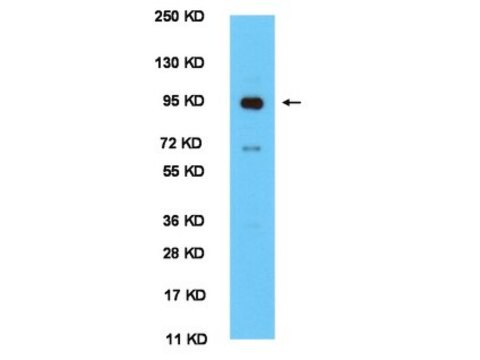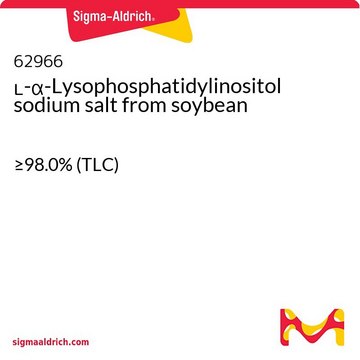L7260
Oleoyl-L-α-lysophosphatidic acid sodium salt
≥98%, solid
Sinónimos:
1-Oleoyl-sn-glycerol 3-phosphate sodium salt, 3-sn-Lysophosphatidic acid, 1-oleoyl sodium salt, LPA sodium salt
About This Item
Productos recomendados
Quality Level
assay
≥98%
form
solid
color
white
lipid type
phosphoglycerides
storage temp.
−20°C
SMILES string
O[C@](COP([O-])(O)=O)([H])COC(CCCCCCC/C=C\CCCCCCCC)=O.[Na+]
InChI
1S/C21H41O7P.Na.H/c1-2-3-4-5-6-7-8-9-10-11-12-13-14-15-16-17-21(23)27-18-20(22)19-28-29(24,25)26;;/h9-10,20,22H,2-8,11-19H2,1H3,(H2,24,25,26);;/b10-9+;;
InChI key
CHJOEWDRTPWOCY-TTWKNDKESA-N
¿Está buscando productos similares? Visita Guía de comparación de productos
General description
Application
- for the activation of Ras homolog gene family, member A (RhoA) and expression of claudin-1 in human breast cancer epithelial cell line
- in RH7777 cells for cyclic adenosine monophosphate (cAMP) accumulation assay and calcium mobilisation assay
- in vitro luciferase assay and live-cell imaging
Biochem/physiol Actions
Features and Benefits
Caution
Preparation Note
Storage Class
11 - Combustible Solids
wgk_germany
WGK 3
flash_point_f
Not applicable
flash_point_c
Not applicable
ppe
Eyeshields, Gloves, type N95 (US)
Certificados de análisis (COA)
Busque Certificados de análisis (COA) introduciendo el número de lote del producto. Los números de lote se encuentran en la etiqueta del producto después de las palabras «Lot» o «Batch»
¿Ya tiene este producto?
Encuentre la documentación para los productos que ha comprado recientemente en la Biblioteca de documentos.
Los clientes también vieron
Contenido relacionado
Discover Bioactive Small Molecules for Lipid Signaling Research
Nuestro equipo de científicos tiene experiencia en todas las áreas de investigación: Ciencias de la vida, Ciencia de los materiales, Síntesis química, Cromatografía, Analítica y muchas otras.
Póngase en contacto con el Servicio técnico










